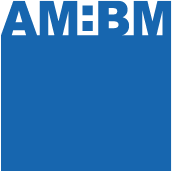Beam structures are important for a wider range of fields: starting from civil- and mechanical engineering, over aerospace and biomedical applications, to molecular physics, electronics, and optics. The mechanical behavior of such structures is described by so-called beam formulations which employ certain assumptions to mathematically model the physical properties of a beam structure. For instance, a classic assumption of the widely-used Bernoulli-Euler formulation is that cross sections are rigid and perpendicular to the deformed beam axis. Permanent amelioration of structural materials enables the construction of more complex curved and twisted structural shapes which were unimaginable just a few decades ago. In order to analyze these novel structures, a steady improvement of beam formulations is required.
This research project provides such a formulation that can describe the dynamic behavior of arbitrarily curved spatial beams. It satisfies the basic mechanical principles and hence, an exact representation of rigid body motions, as well as the recovery of the elastic structure to its initial position after the unloading can be modeled. A key aspect of the proposed formulation is a velocity of an arbitrary point that can be defined by components of the velocity of the beam axis and the angular velocities of a cross section. Furthermore, a local orthogonal coordinate system is introduced for the determination of the characteristic stiffness, damping, and mass of the beam structure.
The numerical implementation of the developed beam formulations is realized by applying the so-called isogeometric analysis (IGA) concept. This emerging standard for the simulation of complex structures enables the exact modeling of geometries. Regarding the present project, the simple control over the continuity between geometric parts – a distinguishing feature of IGA – is particularly beneficial.
The main contribution of the project is the development of an accurate and robust simulation method that can analyze the complex dynamic behavior of arbitrarily curved spatial beams. In contrast to existing methods, the proposed concept can handle large deformations of beams with arbitrarily shaped axes and solid cross sections. Thus, the outcome of the project will allow the application of beam formulations to novel areas and will further increase the (already great) importance of the corresponding structures in engineering and other fields.

